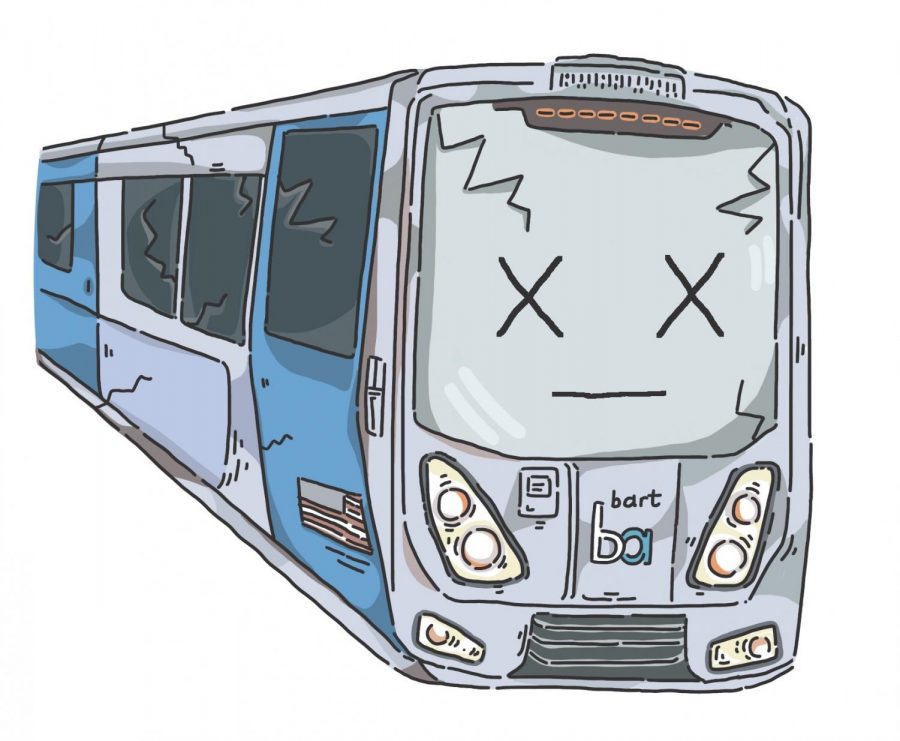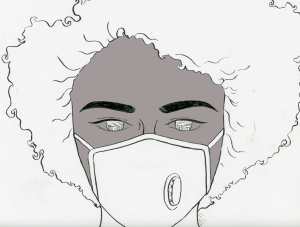BART takes precautionary measures to prevent “transit death spiral”
Without preventative measures, BART could fall down a historically predictable “transit death spiral.”
October 24, 2019
In a recent episode of Netflix’s “Patriot Act,” comedian and political commentator Hasan Minhaj noted that most transit systems in the country are rapidly losing their ridership. BART is not an exception: the number of passengers decreased from 128.5 million in 2016 to 120.6 million in 2019, with the trend of declining ridership showing no indication of ending in the near future.
According to Minhaj, this can signal the start of a “transit death spiral,” which means that “when fewer people use public transit, it makes less money, which means it either has to cut service or raise fares or both. So even fewer people use it, which means it makes even less money, which means even worse service and higher fares.”
This is corroborated by a BART customer satisfaction survey taken in 2018: from 2014 to 2018, customer satisfaction dipped from 74% to 56%.
The poll found that the decline was largely attributed to the insufficient presence of BART police or personal security, lack of cleanliness, poor enforcement against fare evasion, and most significantly, the failure of BART to address homelessness on the transit system.
According to BART spokesperson Alicia Trost, worries about the safety and cleanliness of the system are the most rampant on weekends and nights, leading many to eschew the transit system for alternative methods of transportation, like ridesharing.
This situation is dire for BART, especially from a financial standpoint. Riders’ fares cover two-thirds of the railway system’s operating costs, and with fewer riders, BART also brings in substantially fewer profits. The decrease in riders translates to the agency likely to receive only $435 million in 2019, compared to $462 million in 2016. Advertising revenue has also decreased by 50%. This has led the board to consider a 5.4% price hike on tickets starting 2020, with another price hike to be expected in 2022.
The agency has cut costs by leaving job vacancies open and has cut several significant programs, including a training program for police officers. This is in the wake of a report by the Alameda County Grand Jury that revealed that violent crime on BART has increased by 115% since 2014. Violent crime on the transportation system has increased despite the board’s 2014 implementation of “BART Watch,” an app to report crimes when they occur.
However, Trost believes that the agency can win back its riders through a rehaul of their infrastructure. In January 2017, BART initiated the Measure RR program.
Measure RR is a $3.5 billion general obligation bond given by the state that aims to help BART rebuild their almost 50-year-old infrastructure. Key parts of the plan is to replace rails and water-damaged tunnels, modernize electrical infrastructure, add lighting and security, and increase the number of riders the system can carry. By March 2019, 6% of the allocated funds had been spent on improvements.
TransForm CA, a social justice organization that promotes public transportation, lauded the move, saying that “for decades, BART misplaced its priorities, spending millions on expensive expansions that drew very few new riders, and too little on investments to keep the core system in good order” and this measure would be a way for BART to take a step in the right direction.
While they have praised the move, TransForm has cautioned that BART “staying on the right track is not a foregone conclusion.” Many customers have complained that progress has been slow, and despite the maintenance work over the past two years, public approval has still dipped.
The combination of the new construction with the breaking down of the system has caused BART to be characterized by malfunctions this past year.
In June, hundreds of BART passengers were forced to evacuate a train mid-travel when it malfunctioned between two Oakland stations. The 421 riders were stalled in the train for over an hour before they were evacuated to the nearby station through the train tunnel.
On Sept.2, BART repair workers accidentally downed power lines, causing an hours-long shutdown on Highway 24, and recent Measure RR work on the Lafayette station, among others, has forced BART to replace some trains with buses that face 40+ minute delays.
BART has acknowledged these frustrations, explaining that their “early work isn’t very visible to the public, but that will soon change.”
BART General Manager Grace Crunican argued that the challenges are temporary, while “Measure RR-funded projects will allow us to rebuild the backbone of BART and provide a more reliable system for decades to come.”
According to the agency, recent developments have included the replacement of 27 miles of track to improve reliability, awarding a contract to replace old escalators and planning to upgrade the train control system.
Ultimately, Measure RR is a two-decade-long project, so it’s left to be seen how BART can allocate its $3.5 billion dollar bond to escape a potential “spiral” and support the Bay Area’s rapidly increasing population.





